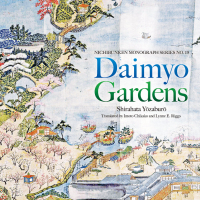Though overshadowed by Kyoto, which boasts more than 200 listed gardens, Tokyo likely has the foremost concentration of formal gardens of any Asian capital.
Daimyo Gardens, by Yozaburo Shirahata, Translated by Imoto Chikako and Lynne E. Riggs.
209 pages
INTERNATIONAL RESEARCH CENTER FOR JAPANESE STUDIES KYOTO, Nonfiction.
Garden scholars have been unrelentingly snooty when comparing the refined gardens of Kyoto with the more showy style of old Tokyo, but, as this book demonstrates, the capital is home to an extraordinary number of gardens commissioned by daimyo, the heads of noble families. The predominant style of the Edo Period (1603 to 1868) was the stroll garden, with paths designed to reveal a series of perspectives resembling a mise en scene.
Contrary to the trend of viewing landscapes as objects of visual appreciation — as works of art — Yozaburo Shirahata emphasizes their original function as venues for pleasure and hospitality. The author compares Japanese stroll gardens and European Baroque landscapes of the same period, particularly those at Vaux-le-Vicomte and Versailles, where they served a similar purpose: as entertainment spaces. In Japan's case, gardens were also requisitioned as venues for outdoor banquets, poetry readings, duck hunting, falconry and fishing.
Once indispensable to any daimyo estate, those gardens that have survived, albeit in much reduced scale, are vital for the health of the city. Without them, and the public parks they inspired, Tokyo would be a poorer place, reduced to airless streets, unbearable temperatures and siroccos of dust motes.


















With your current subscription plan you can comment on stories. However, before writing your first comment, please create a display name in the Profile section of your subscriber account page.